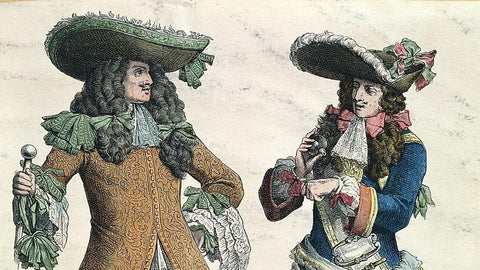
The French, Fashion and Snuff
Share
It all began with Jean Nicot, the illustrious Frenchman who actually lends his name to the plant nicotiana due to his role in popularizing ‘the weed’. The initial domino in a succession of events that led to the golden age of tobacco was Nicot's appointment to French Court as Ambassador to Portugal. In a particular visit to Portugal, he was introduced to tobacco as a medicinal plant with extraordinary properties. This led him, around mid-16th century, to introduce the ritual of sniffing tobacco to the French Court. Initially Catherine, the King's wife, was prescribed the magic powder to relieve her headaches. She later proclaimed complete recovery and insured Mr. Nicot's future. The habit spread over the nobility like wildfire. Overnight snuff had become the latest rage with the upper classes.

The 17th century in France was a series of formidable reigns that permitted the French people to become world leaders on many fronts including, artistic, scientific, social and political. The entire apex of society had embraced the taking of snuff into their daily lives and the habitude purveyed in all aspects of culture. Between Henry and the two Louis, the 17th was the time of great architecture, such as extending the Louvres, Place Dauphine, the erection of Pont Neuf and Versailles. Not to mention the prowess of architect Jacques Lemercier and designer André Le Nôtre under the watchful eyes of both Cardinals Richelieu and Mazarin; the Marquise de Rambouillet's contribution in popularizing literature via her salons and the founding of l'Académie Française to regulate and maintain the French language while promoting theater and the written word; the establishment of l'Académie Royale de la Peinture et Sculpture as encouragement to advance the arts of painting and sculpture; La Comédie Française to boost the writing genius of Molière and Racine; l'Académie Royale de Musique to endorse creative achievements in music and opera; the formation of l'Académie des Sciences that nurtured such names as René Descartes, Blaise Pascal, Jean de la Bruyère, Pierre Bayle, to name but a few, who opened the door to the Enlightenment and the Age of Reason. France was not only the center cultural progress but also the center of fashion.

In Molière's 1665 play, 'Don Juan', the character, Sganarelle, sings the praise of tobacco, snuff box in hand. Snuff's association with fashion made it irresistible among the French. It was seen as more virtuous than smoking as fire and brimstone were the devil's trade and the fear of unintentionally setting something alite. What had begun as a medicine was now considered a pleasurable habit and a fashionable accessory. The handkerchief and snuff box, among the nobility, had become indispensable. The tobacco itself was available in many flavors and aromas including jasmine, orange blossom, attar of rose and bergamot, to name but a few. The French perfumer and snuff seller, Jean Lillie, concocted several of the memorable scents for his renowned clients. The French not only popularized snuff taking but created an entire ritual around the experience. France was the center of European fashion and emulated though most of the continent. The spread of snuff taking was certainly due to the French aristocracy and the need for others to follow and be in vogue. One of the events that helped to bring snuff to the lower classes in early 18th century, especially in England, was the Battle of Vigo Bay that flooded the English market with quality Spanish tobacco that was made available to everyone. You can read more about it here. S'nuff said.
